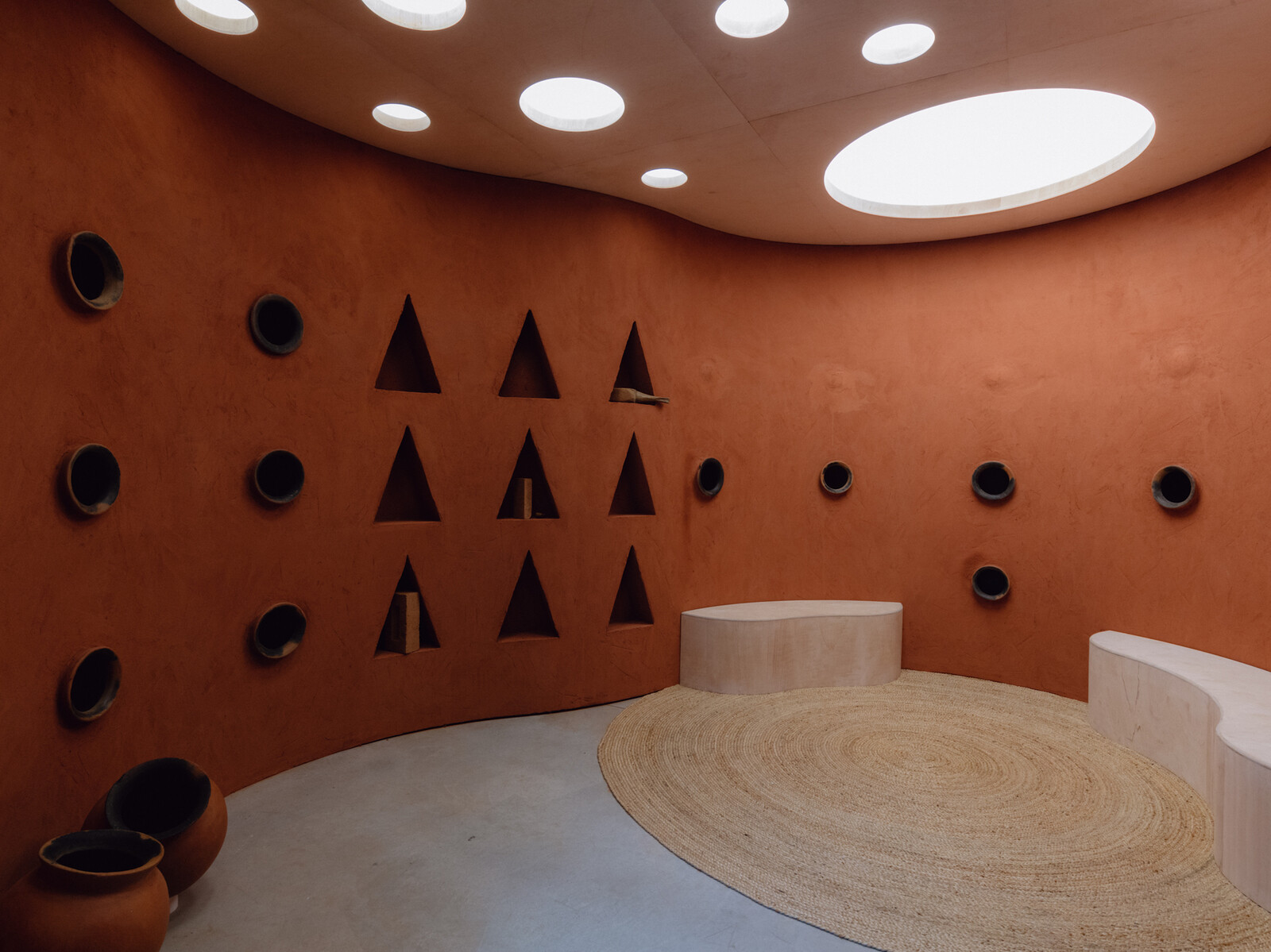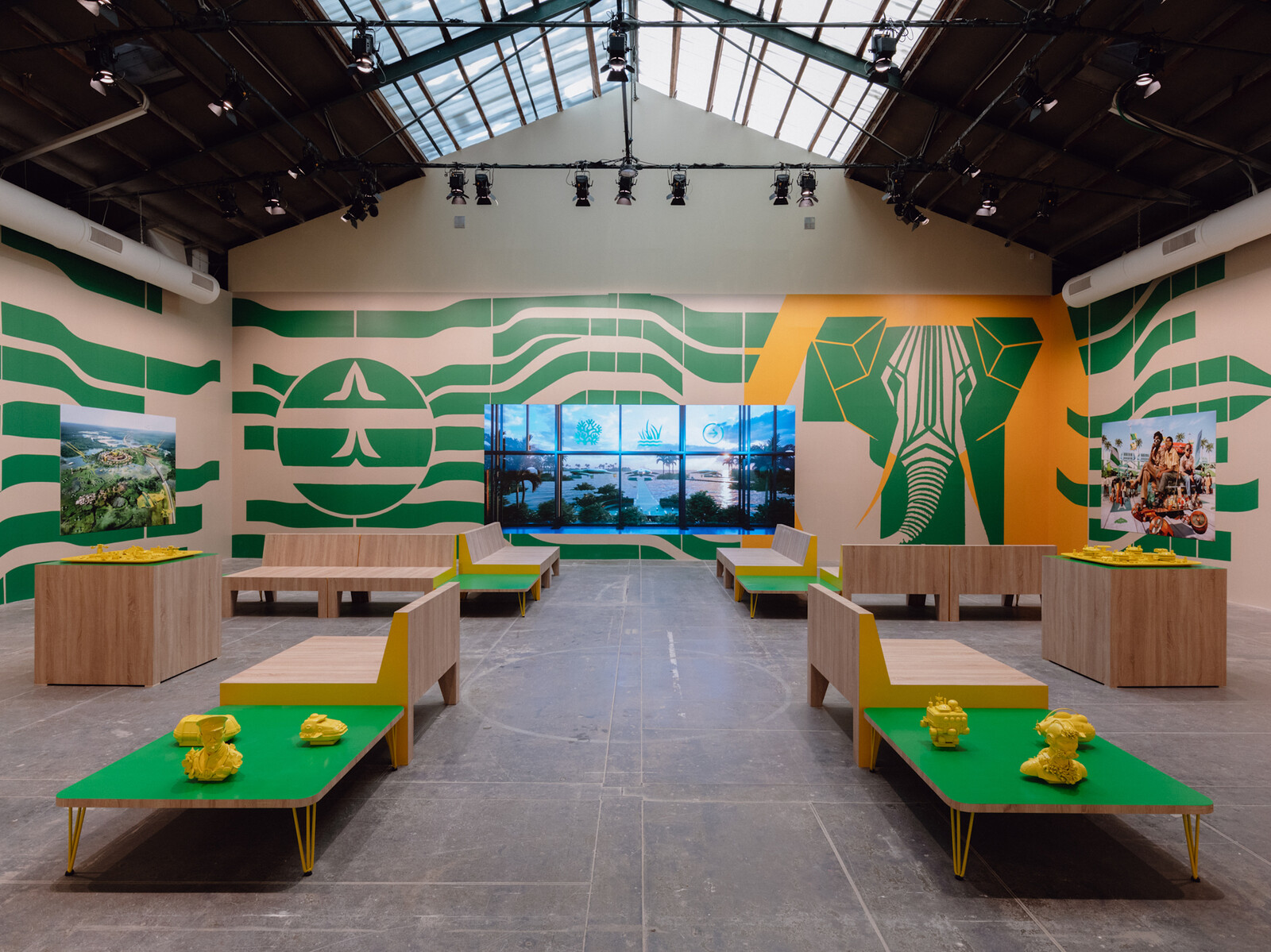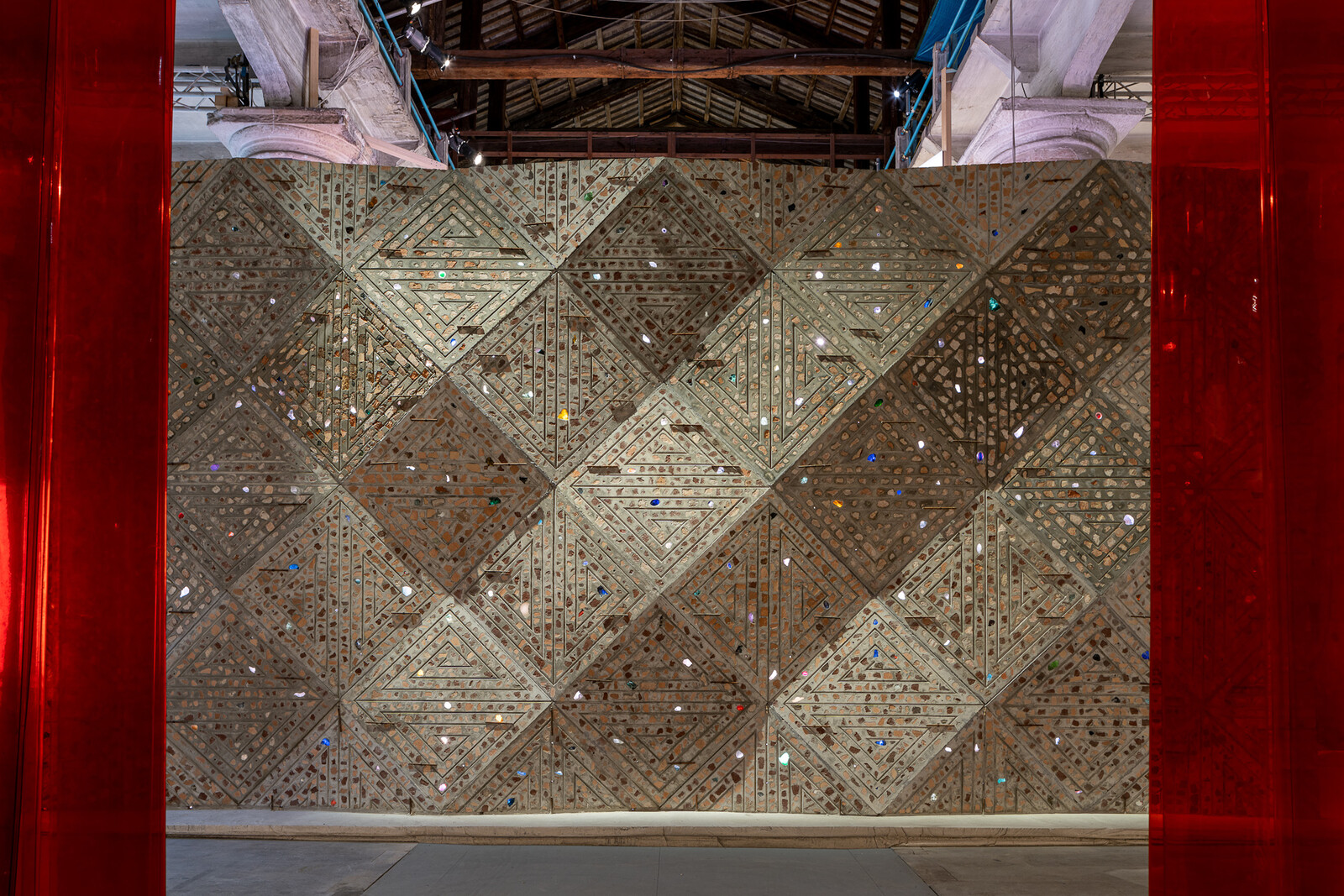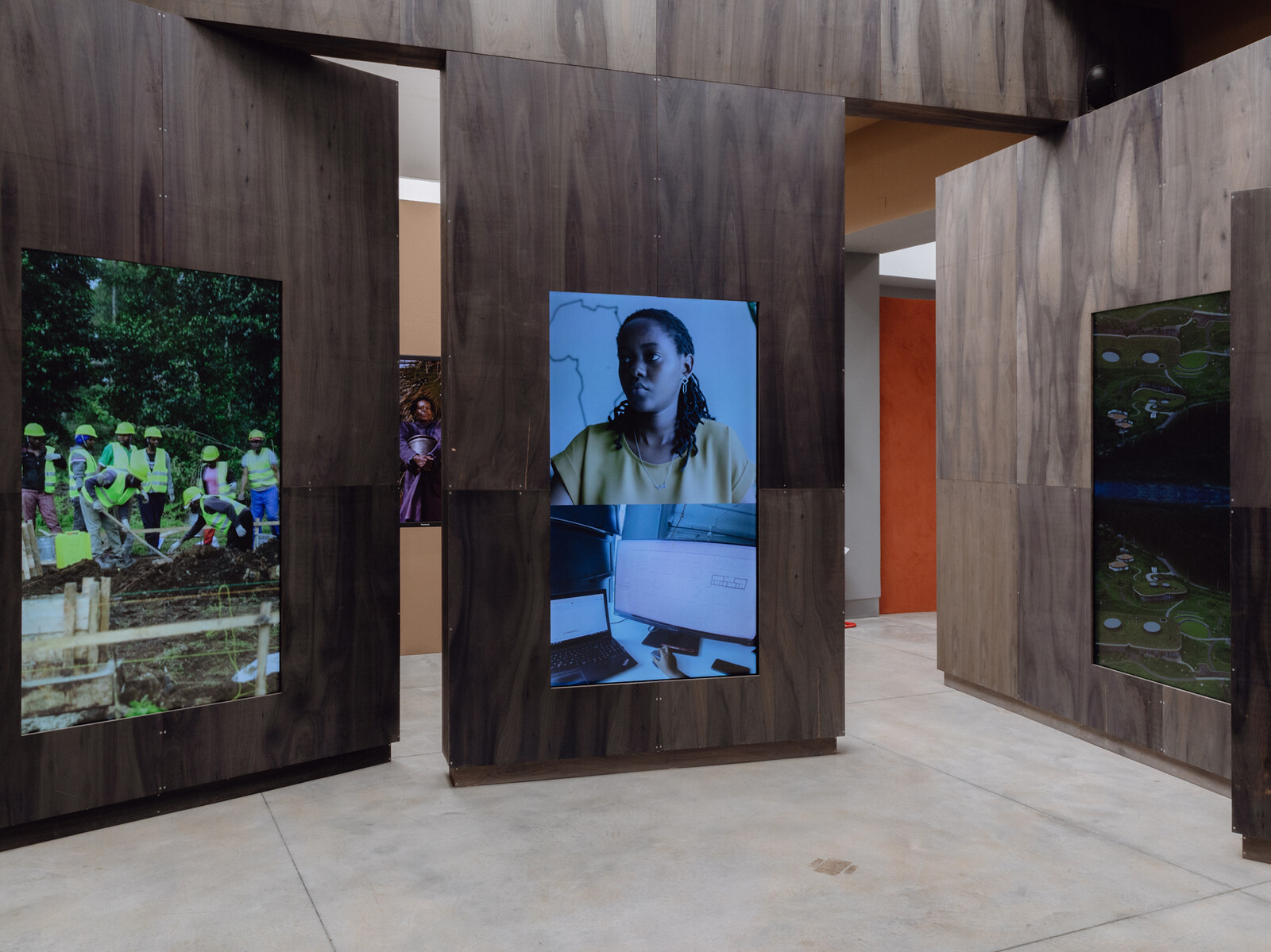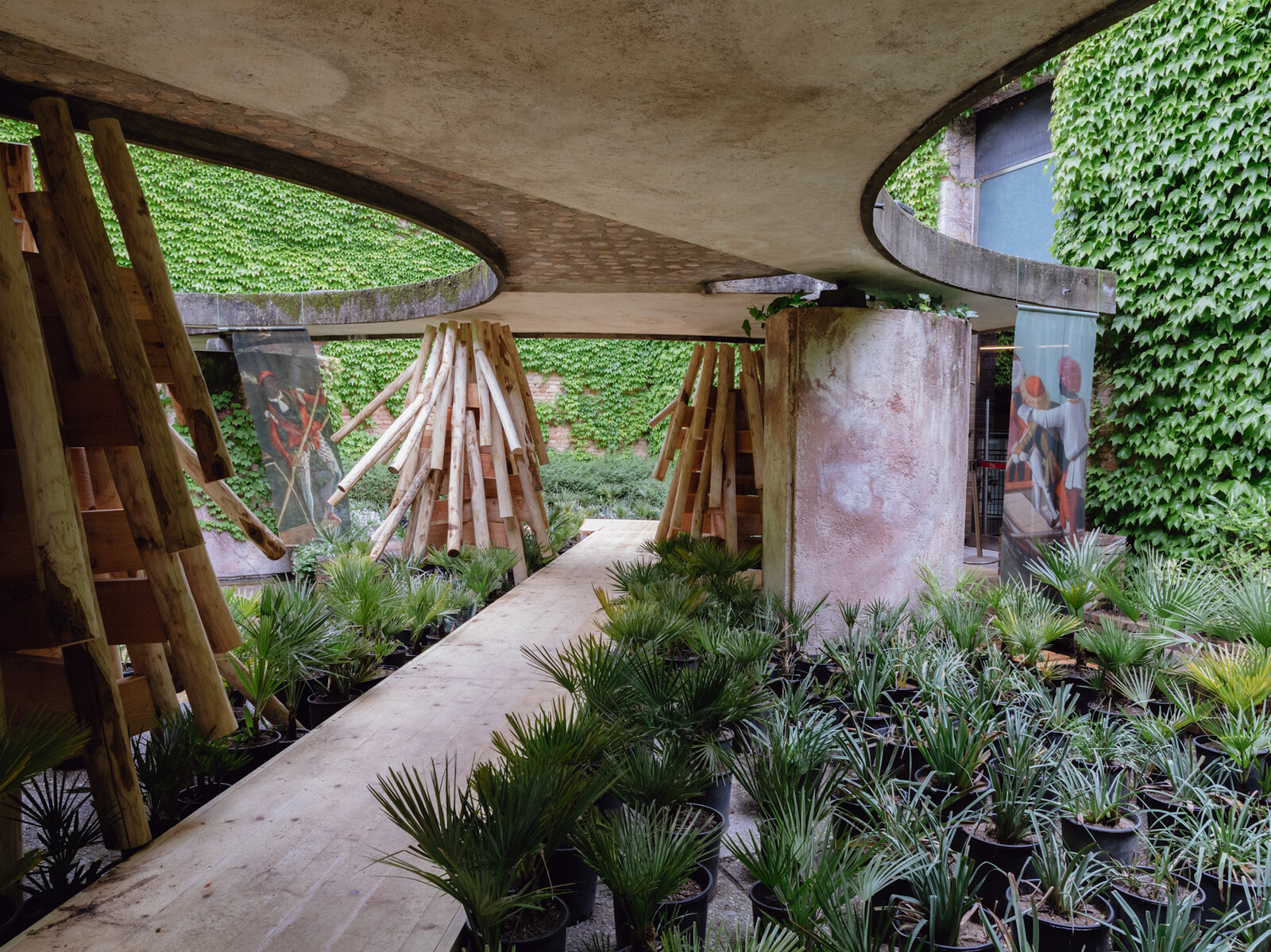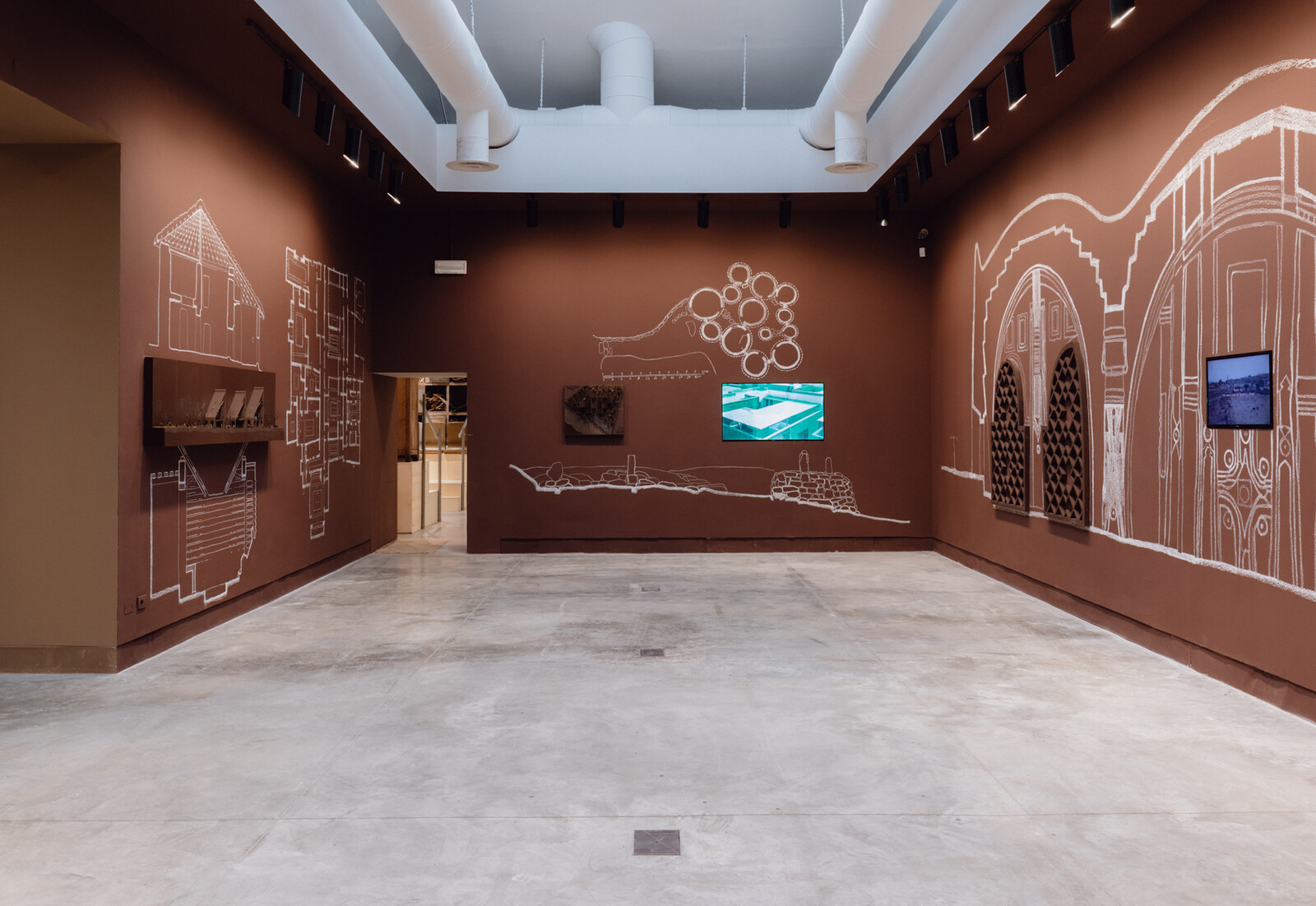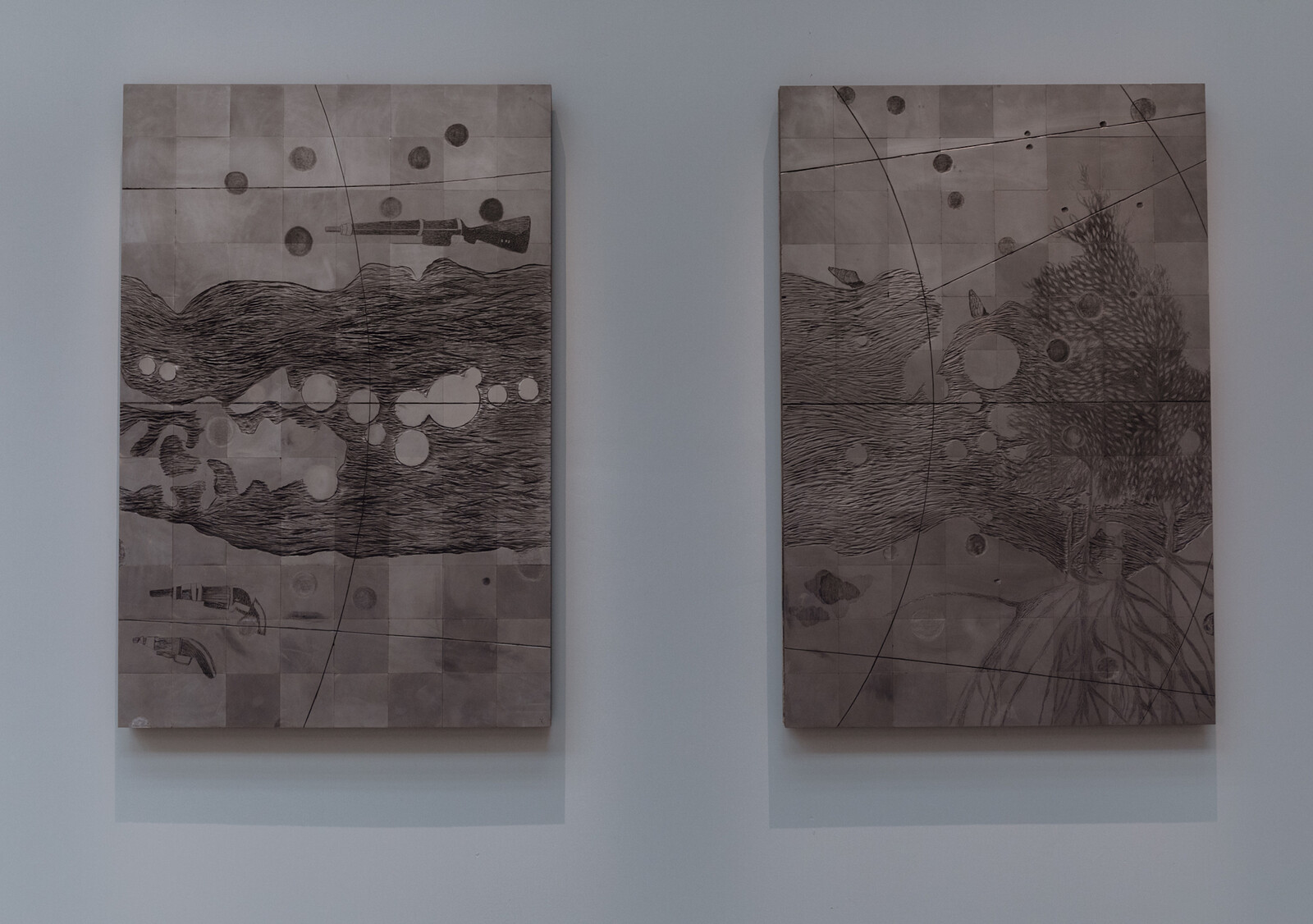In a recent interview with the New York Times, Norman Foster questioned why “we shouldn’t be converting seawater into jet fuel and decarbonizing the ocean at the same time.”1 Meanwhile, the 10,200sq mile Neom mega-project planned for the Saudi Arabian desert comes with claims of a “new benchmark for combining prosperity, liveability and environmental preservation.”2 As the architecture profession contends with the ingrained relationship between climate emergencies and built environments, both statements exemplify a tendency towards techno-solutionism in vocal sections of the industry—and betray an approach to design that overlooks material extraction and environmental destruction to justify extravagant capitalist projects behind weak masks of sustainability.
For all its challenges—the unmanageable volume of content, the density of text, the opacity of curatorial approaches—the 18th edition of the Venice Architecture Biennale offers a firm and timely challenge to this trend. Typically understood as a global state of the union for the profession and broader spatial practices, this edition (titled “The Laboratory of the Future” and curated by Ghanaian-Scottish architect and academic Lesley Lokko) is largely unflinching and rigorous in its selection of projects which reject techno-solutionist sustainability, opting instead for a showcase of architecture for “decolonization and decarbonization.”
These themes run through the work of eighty-nine participants in the international exhibition, organized into six parts across the Giardini, Arsenale and Forte Marghera under titles such as “Dangerous Liaisons,” which features practitioners working in “hybrid” ways, or “Guests from the Future,” with its focus on emerging practitioners. The overwhelming amount of work can be read as both decolonial choice and curatorial misstep. More than half the participants in the exhibition are from Africa or identify as members of its diaspora, and the “Force Majeure” section features several of the most significant African and African diaspora architects working today, such as David Adjaye, Sumayya Vally, and Hood Design Studio. This allows for a multivalent telling of architectural history and contemporary practices in Africa and the diaspora that intrinsically avoids the homogenizing, exploitative, myopic, or tokenistic treatments of the continent that have characterized much of western architectural discourse—and celebrates the work of non-white spatial practitioners in the process.3
This commendable approach is, however, slightly let down by an understated curatorial presence in the galleries, which can make the exhibition hard to follow. The six parts are difficult to discern from each other and clearer signposting is required to sustain attention and orientation across the many hours required to pass through the full exhibition. Interpretive texts written by the participants themselves—and the bizarre decision to apply lengthy wall texts in low-contrast and reflective colours, making them almost illegible—do not help either. As a result, individual works are largely left to fend for themselves rather than being gathered into groups or sections.
That said, the best works in “The Laboratory of the Future” address urgent issues directly. They tackle land struggles, race and reparations, and housing injustice, as well as material futures, collective joy, and ecological futurism, without a carbon offset in sight. Contributions by Sammy Baloji, Thandi Loewenson, and Olalekan Jeyifous, for example, resonate across the three sites in their detailed grappling with the entanglements of material extraction, racial capitalism, and colonialism. Baloji’s installation in the Arsenale continues his research into the material consequences of colonialism between his birthplace, the Democratic Republic of Congo, and his home city of Brussels. His rich film Aequare: the Future that Never Was (2023), projected in a screening room, examines early twentieth-century technocratic agriculture while Debris of History, Matters of Memory—one of the sculptural highlights of the biennale—is an undulating wall of bricks, made from mining debris and Venetian glass and in collaboration with the Brazilian architect Gloria Cabral and Martiniquais theorist Cécile Fromont.
Continuing this thread, Loewenson’s work in the central pavilion of the Giardini contextualizes the mining of graphite for lithium ion batteries—an extractive industry of increasing significance for “renewable” technologies—in Mozambique within a broader history of infrastructural exploitation in East Africa. Slabs of graphite engraved with the overlaying narratives adorn the walls, emanating a dark energy that mirrors yet darker histories. In polychromatic contrast, Jeyifous occupies a large room (also in the Giardini pavilion) with AAP/ACE (2023). This fictional worldbuilding project is expressed through retro-futurist graphics, models, and posters detailing the All-Africa Protoport (AAP), a global transport system which “applies indigenous knowledge systems” to repair the kinds of damage done by colonial powers across the African continent explored in Baloji and Loewenson’s projects: a solarpunk take on Paul Gilroy’s Black Atlantic. The posters—part tourist advertisement, part science lesson—introduce visitors to the staff of the AAP (stratoguides and algal pool analysts among them) while pulling off the unusual feat of making system diagrams engaging, even joyful.
Alongside their thematic overlaps, Baloji, Loewenson, and Jeyifous offer an expansive take on how both architecture and architects might be understood today—very few of the projects in this biennale, in fact, simply document a building project. Lokko explicitly uses the catch-all term “practitioners” to describe exhibition participants, deconstructing the authorship of the built environment away from the culturally loaded, and white male–coded, figure of the architect. This invites works which explore new ways of practising—as in reflective films by the UK group Black Females in Architecture or the Boston/Kigali-based MASS Design Group—and creates more space for the inclusion of younger practitioners than is typically seen in Venice. “Guests from the Future” is among the clearer curatorial threads to follow and highlights younger participants including outstanding narrative textile works by Arinjoy Sen, Lauren-Loïs Duah, and Meriem Chabani.
There are instances of more traditional forms of architectural expression. The design approach of Pritzker Prize-winner Francis Kéré is represented through room-scale enclosures, while atelier masōmī’s compressed earth buildings in Niger are shown through drawings applied directly to the exhibition walls alongside contextualizing models and films. Both are architects par excellence of low carbon and locally sensitive buildings and their influence should be felt far beyond West Africa.
In recent years, western cultural institutions have at last begun to reckon with the climate crisis and respond to calls for justice. Such calls have also been directed at the Venice Biennale, with its disproportionate power over global architectural discourse. This exhibition is still an unwieldy leviathan, but Lokko’s “Laboratory of the Future” makes a clear case for its ongoing relevance. Indeed, it succeeds in challenging the very foundations of climate discourse in an architectural context. Lokko has imbued the biennale with a sense of purpose, joy, despair, memory, and justice. Above all, she has turned it into a platform upon which liveable futures may yet be built.
Farah Nayeri, “Norman Foster is Still Looking Upward,” New York Times (May 10, 2023), https://www.nytimes.com/2023/05/10/arts/design/norman-foster-centre-pompidou.html.
Lizzie Crook, “The Line megacity will ‘revolutionise our current way of life’ says Neom director,” Dezeen (August 11, 2022), https://www.dezeen.com/2022/08/11/the-line-megacity-interview-tarek-qaddumi/.
It’s worth drawing attention the hostile context in which the biennale is unfolding—three of the biennale’s Ghanaian curators have in recent days been denied visas by the Italian ambassador to Ghana. See “Curator of Venice Architecture Biennale denounces Italy’s denial of visas to three Ghanaian curators,” ArtReview (May 22, 2023), https://artreview.com/curator-of-venice-architecture-biennale-denounces-italys-denial-of-visas-to-three-ghanaian-curators/.
